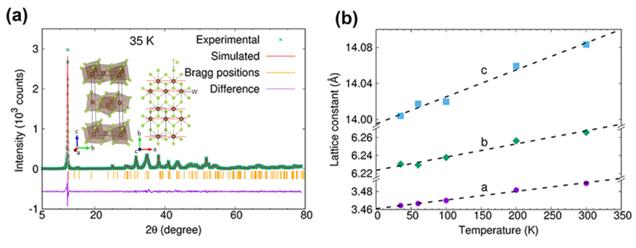Mar 20,2017|By
Using the low temperature X-ray diffraction (XRD) at
It provides experimental evidence of an anisotropic ABJ anomaly in a type-II Weyl semimetal.
Recognized as a remarkable phenomenon, ABJ anomaly originates from the breaking of chiral symmetry in the massless Weyl fermion under quantum fluctuation, which was mainly observed in high-energy particle physics and only recently in Weyl semimetals.
The observation of negative magnetoresistance (MR) along the b axis in electrical-gated WTe2
Thus a natural question is whether one can dope-electrons into a WTe2 crystal to observe the ABJ anomaly, more specifically, a permanent ABJ anomaly rather than a temporary one under electrical gating.
In this study, the team adjusted the Fermi level of WTe2
They found that the temperature-sensitive ABJ anomaly is attributed to a topological phase transition from a type-II Weyl semimetal to a trivial semimetal, which is verified by a first-principles calculation using experimentally determined lattice parameters at different temperatures.
Theoretical electrical transport study reveals that the observation of an anisotropic ABJ along both a axis and b axis in WTe1.98
Their work suggested that electron-doped WTe2
The work was supported by the low temperature X-ray diffraction (XRD) facility, a measurement system of the Steady High Magnet Field Facility (SHMFF) at CHMFL.
Their discovery have been published in
 |
|
The temperature dependence of crystal structure change: (a) the XRD pattern for WTe1.8at low temperature of 35K (the inset shows the crystal structure); (b) the temperature dependence of lattice constants of WTe1.8 |
Attachments Download: